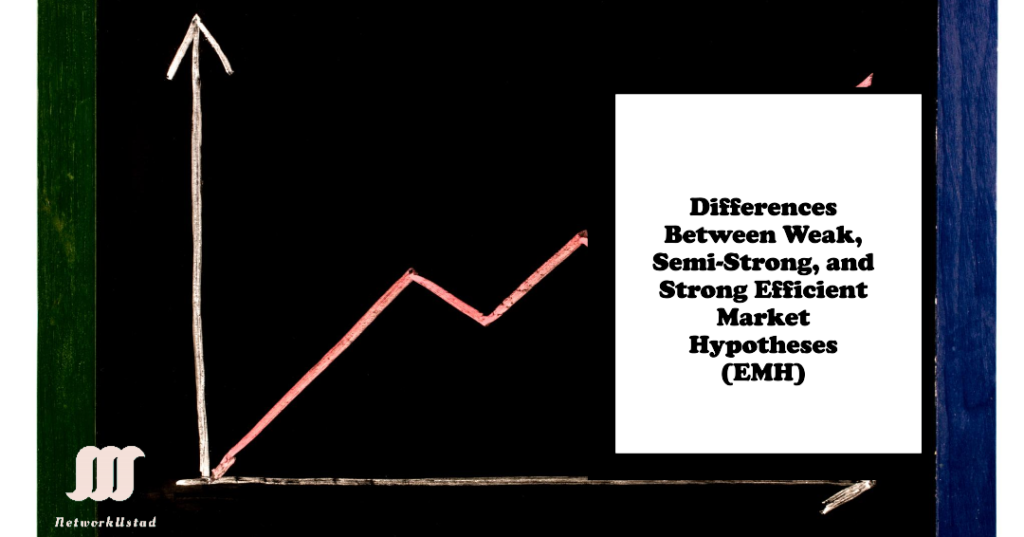The Efficient Market Hypothesis (EMH) challenges how we think about stock markets, proposing that prices always reflect available information. However, not all efficiencies are created equal. From the Weak Form to the Strong Form, each version offers a unique lens on market behavior. Ever wondered if you can outsmart the market? Let’s explore the different forms of EMH and what they mean for your investment strategy. You may click Go quantum-code.app/ if you are looking for a reliable trading platform online.
Weak Form EMH: The Basics of Price Patterns and Historical Data
The Weak Form of the Efficient Market Hypothesis (EMH) suggests that all past market prices and data are already reflected in current stock prices. In simpler terms, this means that any price movement you see today has already accounted for everything that happened in the past. If you’re trying to use historical price trends, patterns, or volume data to predict future stock movements, you might be out of luck.
For example, some investors rely on technical analysis, which involves studying past price charts to forecast future movements. Under Weak Form EMH, this strategy is not effective because all that information is already baked into the current price. It’s like trying to use yesterday’s weather to predict today’s—what’s already happened doesn’t guarantee what’s next.
The Weak Form assumes that markets are efficient to the point that no excess returns can be gained using strategies that rely solely on historical data. You might find this surprising, but even the famous “head and shoulders” pattern, touted by many, would be considered useless under this theory.
To put it another way, the Weak Form EMH tells us that past performance is no crystal ball. This theory challenges the belief that investors can consistently outperform the market simply by analyzing past data. Have you ever wondered why some investors who swear by technical analysis don’t always get it right? The Weak Form EMH might just be the answer. Want to dive deeper? Consider reaching out to a financial expert or researcher to explore how this theory holds up in today’s fast-paced markets.
Semi-Strong Form EMH: Incorporation of Public Information
The Semi-Strong Form of EMH takes things a step further by asserting that not only is past price data reflected in stock prices, but so is all publicly available information. This includes financial statements, news articles, earnings reports, and even the latest government policies. Under this form, any new information that becomes public is almost immediately reflected in stock prices, making it nearly impossible to gain an edge by simply reacting to news.
Take, for instance, a company that just released a stellar earnings report. If the market is semi-strong efficient, the stock price would adjust almost instantly to reflect this new information. Imagine trying to buy a stock after hearing good news, only to find that the price has already shot up—this is Semi-Strong EMH in action. The price has already moved before you can even click “buy.”
What does this mean for you as an investor? It suggests that strategies based on reacting to public information might not give you the upper hand you were hoping for. The moment the news is out, the opportunity to capitalize on it might already be gone. It raises a fascinating question: If everyone has the same information at the same time, how do some investors still manage to outperform the market? Could it be luck, or perhaps a deeper understanding of market dynamics?
For those looking to navigate the waters of investing with this form of EMH in mind, it might be worth exploring strategies that go beyond public information. This could involve seeking advice from seasoned investors or financial experts who understand the subtleties of market movements.
Strong Form EMH: The Incorporation of All Information, Public and Private
The Strong Form of EMH is the most extreme, suggesting that stock prices reflect all information—both public and private. This means that even insider information, which is not available to the general public, is already incorporated into stock prices. Yes, you read that right! Even the secrets that executives whisper behind closed doors are supposedly priced in.
This theory implies that not even insider trading would give someone an advantage because the market has already accounted for it. Now, this might sound a bit far-fetched, and it’s one of the reasons why the Strong Form is the most debated of the three. If everything is truly priced in, then no one—not even those with privileged information—can consistently beat the market.
Consider the implications: if the Strong Form EMH holds, then any attempt to gain an advantage through private information would be as futile as trying to predict the weather a month in advance. This concept challenges the very core of how we think about markets and raises a significant question: How then, do some hedge funds and investment firms seem to consistently outperform the market?
This form of EMH is particularly controversial because it suggests that markets are so efficient that they leave no room for anomalies or exceptions. However, if you’ve ever heard stories of insider trading scandals, you might wonder how this theory holds up in real life. It’s worth exploring further by discussing these ideas with financial professionals or academic experts who can provide deeper insights into whether markets are truly this efficient.
Conclusion
EMH presents a fascinating perspective on market efficiency, suggesting that beating the market might be harder than it seems. Whether you’re a believer in the Weak, Semi-Strong, or Strong Form, each theory offers valuable insights. So, do you think the market is truly unbeatable? Perhaps it’s time to rethink your strategy and consult with financial experts to navigate these complex waters.




